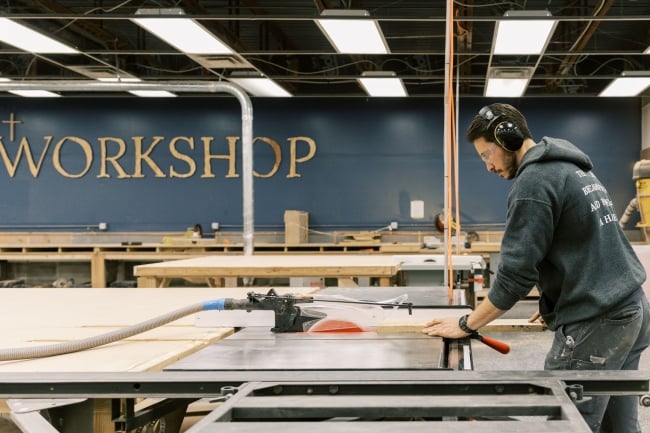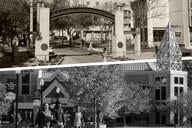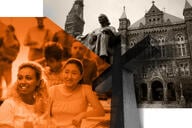You have /5 articles left.
Sign up for a free account or log in.

The College of St. Joseph the Worker, in Ohio, is one of a group of emerging Catholic institutions.
College of St. Joseph the Worker
Catholic colleges have had a tough few years. Cabrini University in Pennsylvania announced closure plans last summer. Cardinal Stritch University in Wisconsin shuttered at the end of the last spring semester, as did Holy Names University in California. Presentation College in South Dakota closed this past summer.
Those four have joined a growing list of small, private Catholic institutions resorting to closures and mergers under the pressures of regional demographic shifts, enrollment declines and rising costs.
But those frightening headwinds haven’t deterred some brave souls from stepping out on faith and starting a spate of new, niche Catholic postsecondary institutions. They include Catholic Polytechnic University, a STEM-focused institution, and Catholic trade schools and colleges that blend vocational education with liberal arts and theology. Leaders of these ventures say their institutions are catering to religious students alienated from and skeptical of the value of traditional higher education and looking for unique alternative routes to careers.
The Reverend Dennis Holtschneider, president of the Association of Catholic Colleges and Universities, noted that many Catholic colleges were historically founded to serve burgeoning immigrant populations in the Northeast, areas where the number of traditional-age students are now dropping. But as some older colleges struggle to fill classrooms, he’s seen a handful of these, new post–high school options spring up.
To survive in the current higher ed landscape, “you have to pick a strategy that makes you different from the rest, and for all five of these, that’s true,” Father Holtschneider said. “They’re claiming very specific spaces … These are kind of new attempts to be very specific in the marketplace for a need they believe exists.”
Filling a ‘Void’
Catholic Polytechnic University, which will be located in the greater Los Angeles area, aims to become a “Catholic Caltech or a Catholic MIT,” said the institution’s president, Jennifer Nolan.
The STEM-focused, nonprofit Catholic university just received approval in December to offer its first bachelor’s and master’s degree programs in computer science from California’s Bureau for Private Postsecondary Education. The university plans to welcome its first cohort of students—roughly 30, university leaders hope—this fall. The next step will be pursuing accreditation and then building out more programs. But Nolan said faculty members are already hired and at the ready, including some with past experience in the military and at the National Aeronautics and Space Administration.
Nolan said the idea for Catholic Polytechnic was born out of her own deliberations as a Catholic parent of children who loved science. She didn’t want to send them to a secular institution, where she worried they “might be talked out of their faith by a smooth-talking atheistic professor,” but Catholic colleges are predominantly liberal arts–focused and don’t have the intensive science grounding that might launch students into STEM careers.
She noted that many classes at Catholic Polytechnic will include discussions of how Catholic ethics relates to the subject at hand, from artificial intelligence to biochemistry. The university also seeks to be recognized by the Cardinal Newman Society, a Catholic organization created to “defend faithful Catholic education,” which lists “model institutions that refuse to compromise their Catholic mission,” according to the organization’s website.
“This is filling a big void in higher ed right now, because there are a lot of not just Catholic but Christian people out there who really want a high-demand career, a high-paying career, they want science or computer science, but they want that faith involved also,” Nolan said.
A ‘False Dichotomy’
Some Catholic trade schools have also launched recently.
Santiago Trade School in California opened last fall to prepare men for apprenticeships. Harmel Academy of the Trades, a trade school for men in Michigan, graduated its inaugural class in 2022.
David Phelps, president of Harmel Academy, said students don’t leave with credentials, but that’s not the point of the nonprofit trade school; the goal is “community formation.”
Its two-year program introduces men to various trades in their first year, and then they participate in apprenticeships during their second year to obtain journeyman status and get a start on their on-the-job training hours. Throughout, students are required to be employed, participate in prayer three times per day and also participate in humanities classes with a specific focus on the “gospel of work”—the role work plays in theology and spirituality.
“In some ways you can say it looks collegiate, but in other ways you can say it looks monastic,” Phelps said of the model.
While Harmel currently has just 21 students enrolled, Phelps said some weeks he receives multiple calls about establishing similar trade schools in other dioceses, which he’s considering for the future.
Other emerging options blend vocational education and traditional higher ed.
For example, the College of St. Joseph the Worker in Ohio, which plans to open in fall 2024, will offer a six-year program in which students earn a bachelor’s degree in Catholic studies and apprentice in a trade of their choice. The first three years of the program will take place on the Ohio campus, and the second half will be taught remotely so students can apprentice at college-approved shops in any state of their choosing and earn their journeyman status and complete their training hours there.
Jacob Imam, founder of the college and its vice president of finance, said earning a bachelor’s degree and completing an apprenticeship could take eight or nine years if done one after the other, so the college’s program condenses the two. And because apprenticeships pay, “our students won’t be graduating with crippling debt.”
He believes there’s a “a false dichotomy between the trades and higher education” and too much focus on a college education as a vehicle to a job rather than for the pursuit of knowledge.
The goal is to give students both: a “good, noble and dignified work path,” paired with Catholic studies for their intellectual and spiritual edification, he said. “Our lord himself, Jesus, being the divine word of God, spent most of the years of his life at a carpenter’s bench.”
The college recently obtained certification from the Ohio Department of Higher Education and ApprenticeOhio and plans to pursue accreditation. Imam said at least 100 people applied for 30 spots in the college’s inaugural class, an indication of the level of demand for such blended options.
Kateri College in New Mexico, which plans to open in fall 2025 to between 30 and 40 students, espouses a similar vision. The college aims to graduate students with a bachelor’s degree in liberal and practical arts with a concentration in a trade of their choice.
Founder and president John Freeh noted that the Southwest has a dearth of Catholic higher ed institutions. Meanwhile, there’s been a national surge of interest in trades and “a predicted shortage in hard-skilled trades looming.”
“Fundamentally, the idea behind a Catholic liberal arts education is the formation of one’s greater humanity, over and above any career one might choose, the ability to enter into dialogue with the great thinkers of the past and speak and analyze and read and assess reality around us,” Freeh said.
But combining that education with a trade “sets somebody up for a really good life” in which “they could be earning a higher salary at a younger age,” he added.
Going Against the Grain
Father Holtschneider said these new institutions are surfacing at a time when other Catholic colleges are struggling to stay afloat, but they have the advantage of being hyperspecialized.
The new institutions have “very different models,” making them “almost a perfect experiment to try which models really are best and which have the best market,” he said.
He added that up-and-coming options also seem to take a more “traditionalist” approach, with an emphasis on Catholic teachings and practice, in contrast to some other Catholic colleges and universities that intentionally cater to a broader student base of “all faiths and none.” He said this trend coincides with a burgeoning homeschooling movement among traditional Catholic parents, which he believes could be a pipeline to these kinds of institutions.
Freeh agreed, noting that students over all are questioning the value and cost of higher ed, while religious students are skeptical of higher ed’s “agenda” as campuses become epicenters of broader national culture wars.
Nolan said the headwinds affecting other Catholic colleges don’t scare her, because what Catholic Polytechnic plans to offer doesn’t exist yet.
“I see a tailwind, and the wind is the Holy Spirit,” she said. “I don’t actually see a difficulty, especially when we are filling a niche that has not been filled in the United States at all.”
Phelps said Harmel emerged at a time when young people, particularly men, crave community and hands-on educational experiences in the face of social isolation and rising mental health challenges. He also believes higher ed institutions are no longer viewed as the foremost purveyors of knowledge when “I can pull my phone out, and now I can ask AI, even, to give me insights into the world,” which contributes to doubts about its value.
“I think the institutions that survive will be the ones that allow themselves to ask … what are the larger challenges we’re facing?” he said. “And can we reinvent ourselves?”





